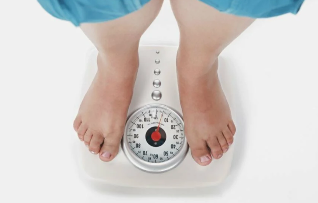Osteochondrosis — a chronic relapsing disease, occurs on the background of constant destruction of the vertebral bodies and intervertebral discs. Depending on the localization of the vertebrate structures, degenerative changes, one distinguishes thoracic, lumbar, sacral pathology, as well as the neck. Leading symptoms of the osteochondrosis syndrome, whose expression increases during physical stress, the bias of the movements. The clinical picture is often present vertebral symptoms: headache, horse racing blood pressure, decreased visual acuity and hearing are.

The diagnosis is made on the basis of the results of instrumental studies, x — ray, MRI, CT. In the therapy of osteochondrosis drugs from various clinical and pharmacological groups. To improve your clinical effectiveness of therapeutic massage carried out and the physio. One of the most important methods of therapy and prevention the physiotherapy is.
The mechanism of the development of the disease
The pathogenesis of osteochondrosis is the loss of the nucleus pulposus of their hydrophilic properties. This semi-liquid structure consists of connective tissue fibers and fabrics jelly similar. Depending on the Mature of man, a reduction of the vascular bed in each disk between the vertebrae is. The entrance into it of nutrients are diffuse, i.e. according to the principle of the spontaneous alignment of the concentrations. This explains the impossibility of a complete restoration of the cartilaginous tissue after injury or excessive physical strain on the spine.
Processes of osteochondrosis exacerbate the changes in the hormone levels and an unbalanced diet. In the cartilage tissue, the amount of nutrients is not enough for their full effect to, the following violations provoked their structure and properties:
- loses the strength and elasticity;
- the shape, the consistency, and configuration changes.
The intervertebral discs are flattened, and the fibrous rings, radial cracks form. This is a reason for the reduction of the distance between the adjacent vertebrae. Gradually in the pathological process of fibrotic connective tissue, rings, bands included. In response to the disintegration of the tissues, the immune system immunoglobulins starts to produce, which leads to aseptic inflammation and formation of edema in the area of the nearby joints and soft tissues. Capsules of the joints are not stretched so that the intervertebral discs fix properly the vertebrae. And in the case of instability of the vertebral segments, the probability of an injury of the nerve root or contraction of the blood vessel increases. This often happens when the cervical osteochondrosis and is the reason for its distinct symptoms.
The causes and triggering factors
The condition of the intervertebral discs the negative of reduced Tonus of the skeletal muscles of the spine. Irrational, asymmetric muscle work occurs need to sit for longer stay of people in a non-physiological Position, for example, with a lowered head while working on the Computer. Provoke the destruction of the cartilaginous tissue can.the constant wearing of the heavy bags on the shoulder, sleep on a soft mattress and pillow
The destruction of the intervertebral disc also accelerate the following external and internal negative factors:
- endocrine and metabolic disorders;
- infectious pathology, especially in chronic;
- previous injuries of the spine (compression fractures, bruises);
- frequent overcooling;
- the presence of systemic or degenerative diseases — gout, Psoriasis, rheumatoid Arthritis, Osteoarthritis, osteoporosis.

If a Person has bad habits, he is in the group of risk. Smoking and alcohol aggravate vessels the condition of the blood, lead to inadequate blood circulation and lack of nutrients in the cartilage tissues drive.
In the presence of flatfoot or clubfoot significantly the risk of degenerative disc disease increases at each place. Such congenital or acquired defects, the cause of the increase in the load on the spine because of the inability to maintain the necessary depreciation, with the basic carrier. Predisposing factor for the development of diseases is obesity.
The deposition of fat deposits in various parts of the body complicated the support of the equilibrium, which joints to the impact of excessive loads on the vertebrae.
The Disease
The first clinical Manifestation of cervical, thoracic, or lumbar osteochondrosis — pain in the back. During the relapses there is drilling, radiating in the nearby parts of the body. The slightest movement leads to increased severity of the pain. A reaction of the people, the adoption of the forced Situation in which the intensity of the unpleasant sensations will be minimal:
- People with osteochondrosis turn rather in the direction of the head, and the whole body;
- in the case of the chest-pathology of the person is afraid even to take a full breath, because this spine is the cause of acute pain in the chest;
- Patients with barer osteochondrosis sit hardly stand and walk because of the infringement of spinal nerves.
Most of the patients at the doctor dull persistent pain and a feeling of tightness movements complain in the morning. This requires an additional differential diagnosis to rule out Myositis (inflammation in the skeletal muscle of the spine) and osteoarthritis. The cause of the pain, crushing pain — compensatory voltage of muscle tissue to stabilization of the affected vertebral-motor Segment. The constant pain syndrome weak or moderate intensity is also the result of a significant expansion of the intervertebral disc and the development of aseptic inflammation.
For the specific localization of the osteochondrosis is characterized by a specific symptomatology. For example, if the pathology of the lumbar spine, there is often a * sciatica — attack of pain in the lumbar and the back of the thigh. Thoracic osteochondrosis clinically manifested by visceral pain in the heart area, in the right upper quadrant, abdominal pain, numbness, increased sensitivity of the skin, a crunch in the vertebrae. But most of all, distinct and diverse symptomatology is different, the pathology, the cervical intervertebral discs.
As a result of the displacement of the vertebrae, the formation of osteophytes vertebral the artery feeding the brain cells, the oxygen is squeezed. A Person suffers from impaired coordination of movements, Tinnitus, headache, arterial hypertension.
What can untreated
Most of the complications of osteochondrosis arise due to the formation of a hernia of the intervertebral disc. It is a shift in the structure of the vertebral body, causing a rupture of the posterior longitudinal ligament. The hard drive is still unstable, and a part thereof protrudes into the spinal canal. A broken adopted, that a hernia, if in the course of their training together with the disc in the channel it penetrates purposee core.
Such a pathological condition of the vertebrate animals structures predisposed to compression of the spinal cord and the development of myelopathy intervertebral discs. It is manifested clinically in torpor, weakness of certain muscle groups of the legs or arms, paresis, muscle atrophy, change in the tendon reflexes. There may be disturbances of the emptying of the urinary bladder and (or) of the intestine. Due to the formation of herniated discs, compressed arteries, and the spinal cord. Formed in ischemic areas, where all the nerves died in the cells. It is called neuro-creates logical deficit of movement are violated, reduces sensitivity, stimulates trophic.

The tactics of treatment
Osteochondrosis defying complete healing, since there are no drugs synthesized, the technology would help to repair the damaged intervertebral discs and vertebrae. But in the therapeutic scheme necessarily chondroprotectors — symptomatic Central time-bomb are included. Preferred drugs with active ingredients Chondroitin sulfate and (or) glucosamine sulfate (hydrochloride).
The clinical efficacy of these drugs is confirmed by the results of years of research. In case of prolonged use (3 months to 2 years) medium-Regeneration of cartilage and other connective tissue structures — ligaments, tendons, bursae partially. With the accumulation of the intervertebral discs glucosamine and Chondroitin start tables provide pronounced analgesic, decongestant, anti-inflammatory. This reduces the dose of NSAIDs, corticosteroids, muscle relaxants, whereby the pharmacological load on the body.
Medication for the joints ineffective if the irregular employment or their use for the treatment of degenerative disc disease 3 degrees, if it is woven to a significant destruction of the cartilage.
For the elimination of symptoms, usually occurs when the cervical or thoracic osteochondrosis are medications to improve the blood circulation, nootropics, the drug, improves microcirculation of the labyrinth, the in the pathology of the vestibular apparatus.
If necessary, in the therapies, antidepressants, anticonvulsants involved.
In the treatment of degenerative disc disease physiotherapy: UHF-therapy, magnetic field therapy, laser therapy to apply. Reflex zone massage, Massage, movement therapy, leech therapy, swimming, Yoga. With the ineffectiveness of conservative treatment of the patients, the surgical Intervention is. Puncture practiced vaporization of the disc, his Laser-reconstruction or replacement of the implant.


















